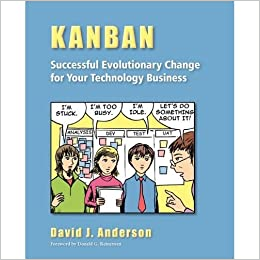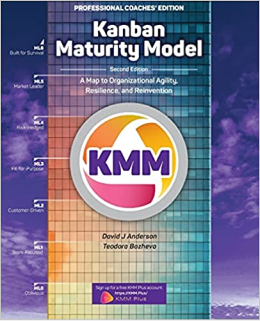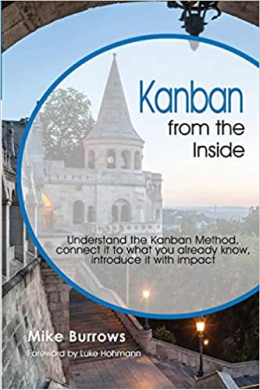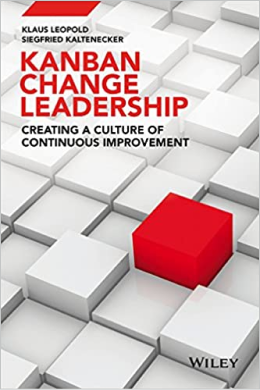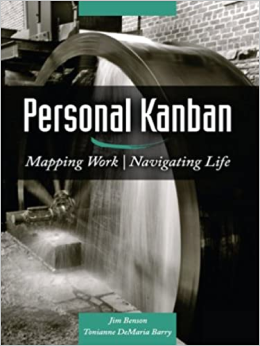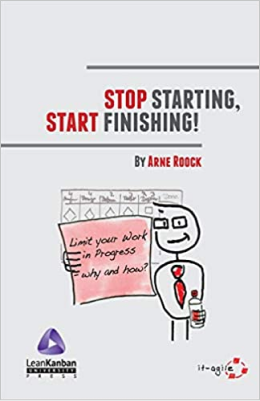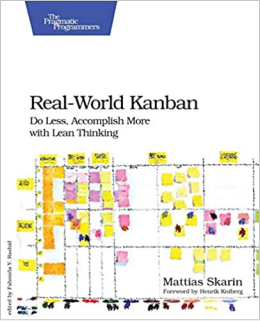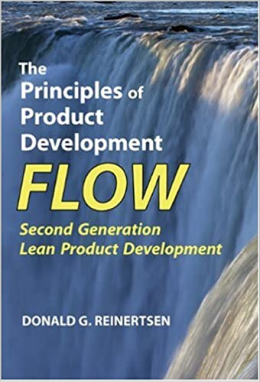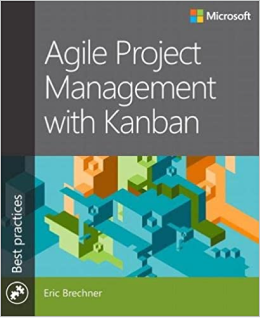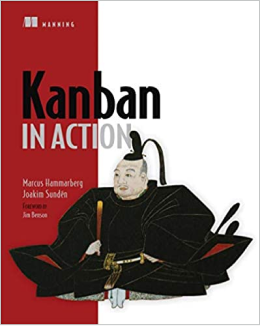Learning about Kanban concepts and practices from others' experiences can provide context, direction, and motivation for newcomers who want to maintain a consistent, educated practice.
Reading kanban resources can be a great method for seasoned practitioners to rekindle their excitement for continuous improvement and see their team's activities in a new light.
Do you have any experience with Kanban? Did you just create a kanban board for the first time? Or are you already an expert? No matter where you are on your kanban journey, the following list contains the best kanban books to provide you with insights, knowledge, and kanban-related experience to help you achieve your business goals.
Since David Anderson published the original Kanban "blue book," several good books on Kanban and its application to different business processes have been written. This list of 11 books is highly recommended to all Kanban students and practitioners.
1. Kanban: Successful Evolutionary Change for Your Technology Business by David Anderson
2. Kanban Maturity Model: A Map to Organizational Agility, Resilience, and Reinvention by David Anderson and Teodora Bozheva
3. Kanban from the Inside by Mike Burrows
4. Kanban Change Leadership: Creating a Culture of Continuous Improvement by Klaus Leopold and Siegfried Kaltenecker
5. Personal Kanban: Mapping Work - Navigating Life by Jim Benson
6. Stop Starting, Start Finishing by Arne Roock
7. Real World Kanban: Do Less, Accomplish More with Lean Thinking by Mattias Skarin
8. Principle of Product Development Flow by Donald Reinertsen
9. Agile Project Management with Kanban by Eric Brechner
10. Kanban in Action by Joakim Sunden and Marcus Hammarberg
11. Actionable Agile Metrics for Predictability: An Introduction - Daniel Vacanti
Kanban: Successful Evolutionary Change for Your Technology Business by David Anderson
The book Kanban: Successful Evolutionary Change for Your Technology Business is written by David Anderson. This book answers essential questions such as what Kanban is, why I would want to use Kanban, how I go about implementing Kanban, how I recognize improvement opportunities, and what I should do about them. In this book, David Anderson explains Kanban through the original implementations of the method. It is considered one of the best books on Kanban for software development. The book gives some practical explanations on how to adopt Kanban. One of the disadvantages of this book is that some readers report that they have expected examples with more details.
- Author: David J. Anderson
- Publish Date: April 7, 2010
- Number of pages: 278 pages
- Material: e-book, paperback
Kanban Maturity Model: A Map to Organizational Agility, Resilience, and Reinvention by David Anderson and Teodora Bozheva
The book Kanban Maturity Model: A Map to Organizational Agility, Resilience, and Reinvention is written by David Anderson and Teodora Bozheva. This book explains a new, powerful tool for consultants and coaches - called the Kanban Maturity Model (KMM), advising enterprises on improvement and transformation using the Kanban Method. The KMM addresses the two most common failure modes experienced during Kanban adoption: overreaching, resulting in a failed start, false summit plateaus, and failure to realize the full benefits. KMM provides advisors with the tools to create just enough positive stress to improve performance without overdoing it. One of the disadvantages of this book is that it covers an advanced topic, so it might not be appropriate for beginners.
- Author: David J. Anderson, Teodora Bozheva
- Publish Date: February 19, 2021
- Number of pages: 538 pages
- Material: paperback
Kanban from the Inside by Mike Burrows
The book Kanban from the Inside is written by Mike Burrows. Kanban from the Inside offers a unique perspective on the Kanban Method, explaining what it is, showing how its practitioners think, and offering practical advice on how to apply it. Instead of focusing just on the mechanics of the kanban board, this book describes everything you need to know to keep a Kanban initiative going. It is easy for beginners to understand the method's principles and practices as well as its true, practical meaning. One of the disadvantages of this book is that some readers say that after the second two chapters, the rest of the book seems to lack the same deepness.
- Author: Mike Burrows
- Publish Date: September 1, 2014
- Number of pages: "Ž270 pages
- Material: e-book, paperback
Kanban Change Leadership: Creating a Culture of Continuous Improvement by Klaus Leopold and Siegfried Kaltenecker
The book Kanban Change Leadership: Creating a Culture of Continuous Improvement is written by Klaus Leopold and Siegfried Kaltenecker. This book shows how to apply Kanban in the workplace as well as how to properly understand change process management with Kanban. The book highlights some critical aspects, several traps that end-users repeatedly fall into, and provides some practical tips for Kanban change management that can assist in avoiding these traps. Further, you will learn how to prepare, implement, assess, train, and operate processes to create a culture of continuous improvement. While the price of this book may put off casual readers, those who seriously want to learn more about Kanban will see that it pays for itself many times over in the long run.
- Author: Klaus Leopold, Siegfried Kaltenecker
- Publish Date: March 6, 2015
- Number of pages: 301 pages
- Material: e-book, hardcover
Personal Kanban: Mapping Work - Navigating Life by Jim Benson
The book Personal Kanban: Mapping Work - Navigating Life is written by Jim Benson. The book is a must-read for knowledge workers who recognize that old productivity models do not work in knowledge work and want a more practical and holistic approach. Personal Kanban is useful and helpful for beginners and knowledge workers. The book will teach you how to apply the two most important principles Limit the Work in Progress and Visualize the Work. All presented concepts are easy for people who are not developers. Some readers report that the author didn't give any specific examples of applying Kanban to projects.
- Author: Jim Benson
- Publish Date: January 3, 2011
- Number of pages: 218 pages
- Material: e-book, paperback
Stop Starting, Start Finishing by Arne Roock
The book Stop Starting, Start Finishing is written by Arne Roock. This booklet follows the journey of Justin, a project manager who achieved outstanding results for his team by doing simple things! Using Kanban for knowledge work, this guide shows how limiting your work-in-progress can help you get things done more efficiently and better. Some readers say that the book consists mainly of white space and drawings and not much text.
- Author: Arne Roock
- Publish Date: July 19, 2012
- Number of pages: 36 pages
- Material: paperback
Real World Kanban: Do Less, Accomplish More with Lean Thinking by Mattias Skarin
The book Real World Kanban: Do Less, Accomplish More with Lean Thinking is written by Mattias Skarin. The book explains how to use Enterprise Kanban, boost engagement, flow, and teamwork, save a failing project with Kanban, and how to help teams outside IT to keep up with the growth by implementing Kanban. Real World Kanban is a short but very informative read on the topic of visual kanban boards. There are several case studies in the book that give readers an understanding of how particular implementations have worked in the past. This is a helpful book for anyone curious about Kanban. Some readers report that the book is inappropriate for beginners as it upgrades existing knowledge.
- Author: Mattias Skarin
- Publish Date: July 14, 2015
- Number of pages: 140 pages
- Material: e-book, paperback
Principle of Product Development Flow by Donald Reinertsen
The book Principle of Product Development Flow is written by Donald Reinertsen. This book provides a comprehensive overview of 175 fundamental principles in eight major areas. The author, Donald Reinertsen, offers practical guidance on how to apply WIP constraints, manage queues, reduce batch size, improve economic decisions, accelerate feedback. The book explains the principles of product development and how to manage flows in the presence of variability that will change forever the way you think about product development. Principles of Product Development Flow is an outstanding book. The book explains clearly and simply some of the very interesting and important concepts that drive Lean, Kanban, project scheduling, and of course, Agile. This is one of the few books that explain how to boost product development flow by focusing decision-making on economic benefit. This book is mainly useful for advanced practitioners and software engineers. The book is not suitable for beginners.
- Author: Donald Reinertsen
- Publish Date: May 29, 2009
- Number of pages: 304 pages
- Material: e-book, hardcover
Agile Project Management with Kanban by Eric Brechner
The book Agile Project Management with Kanban is written by Eric Brechner. The author of the book, Eric Brechner, was the one who pioneered Kanban within the Xbox engineering team at Microsoft. Through this book, he is demonstrating how to use Kanban to maximize quality, value, predictability, and efficiency. In this book, the author attempts to guide the implementation of Kanban. There are many interesting examples that are easy to read, plus, the writing is enthusiastic. This book does not claim to be a single source of information on Kanban but offers recommendations for further details. Some readers say that the book lacks depth, so it might be inappropriate for advanced Kanban practitioners.
- Author: Eric Brechner
- Publish Date: March 16, 2015
- Number of pages: 160 pages
- Material: e-book, paperback
Kanban in Action by Joakim Sunden and Marcus Hammarberg
The book Kanban in Action is written by Joakim Sunden and Marcus Hammarberg. Kanban in Action is a practical, no-frills, no-nonsense introduction to Kanban. The book is based on observations and real-world experiences from two Kanban coaches who have implemented this process in dozens of teams. This book is suitable if you are looking for a comprehensive introduction to Kanban. The authors have remarkably distilled the methods used into a concise and easy-to-understand form. The book is not appropriate for advanced Kanban practitioners, as the covered subject is mainly an introduction to Kanban.
- Author: Joakim Sunden, Marcus Hammarberg
- Publish Date: March 17, 2014
- Number of pages: 360 pages
- Material: eTextbook, paperback
11. Actionable Agile Metrics for Predictability: An Introduction by Daniel Vacanti
The book Actionable Agile Metrics for Predictability: An Introduction is written by Daniel Vacanti. One of the few books explaining Actionable Agile Metrics and how to measure the organization's work efficiency and how to improve workflow predictability. Readers complain about editing errors, and occasionally, difficult to read graphical elements.
- Author: Daniel S. Vacanti
- Publish Date: March 4, 2015
- Number of pages: 314 pages
- Material: e-book, paperback
What Can You Learn from Books about Kanban?
Kanban books can be a practical resource for anyone looking to learn more about the method. Kanban books cover various topics, such as how Kanban can help improve your work, how it can help you make better decisions, and how it has impacted different industries like software development.
The books about Kanban are a great source to learn how to apply Kanban not only in the IT industry and software development but also in knowledge work. You can learn the most important metrics to track when using Kanban and how to read these metrics to improve your organization's productivity.

Mila Chervenkova
Marketing Expert | Agile, Kanban & OKR Practitioner
Mila is a seasoned marketing professional with a rich background in product marketing, content creation, and website optimization. Years of Practicing Kanban, Agile, and OKR practices have made her an expert in creating powerful productivity habits.



